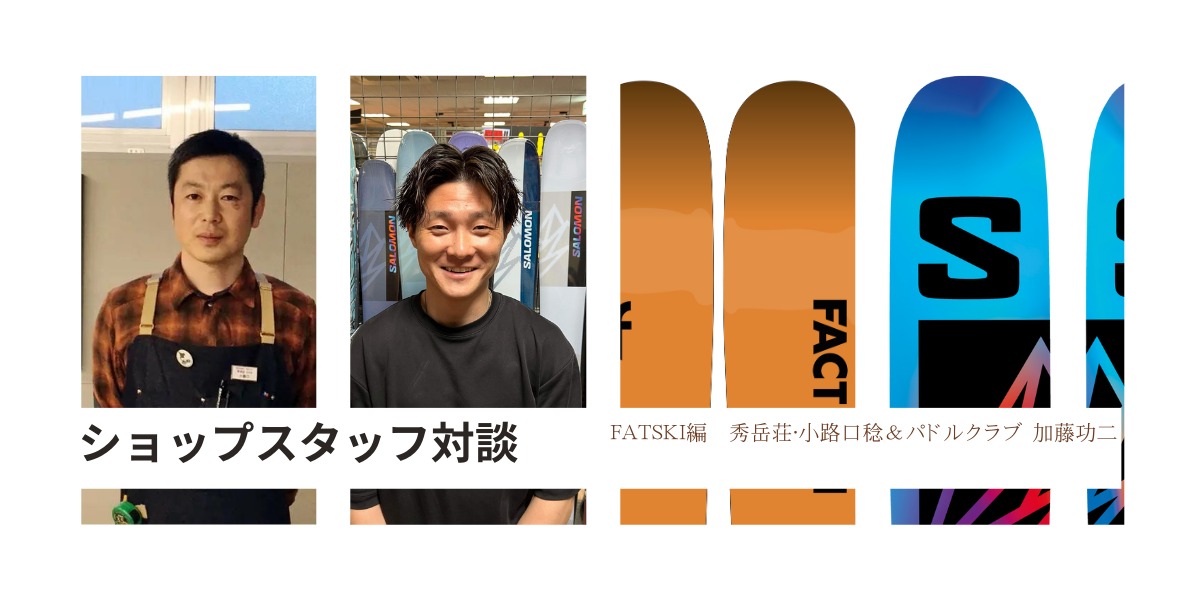Every season, pro shop staff test-drive dozens of new skis from each manufacturer and examine their performance.
The more you ride, the clearer the gear tendencies become, and the more you grasp the standing position and detailed characteristics of each ski, the more knowledge you accumulate.
We asked shop staff who have such a backbone and enjoy skiing frequently to talk about skiing in the 23rd and 24th seasons.
The first event was fat skiing by Minoru Shojiguchi of Shuugakuso and Koji Kato of Paddle Club. Let's deliver the sequel.
Summary: What this conversation talks about
- Regardless of thickness, most fat skis are easy to slide on compacted snow slopes.
- Fat skis are averaging. proof of maturity.
- Among them, a new trend "short fat ski".
- Within the all-mountain category, touring, freeride, freestyle, big mountain and fat skiing are diversifying.
- In particular, the fusion of touring and freeriding is increasing.
- The rise of fat skis with high turn performance in the 80mm and 90mm waist range
- In the 2023-2024 season, pay attention to models with waists in the early 110mm range. Will it become a general-purpose model for advanced users?
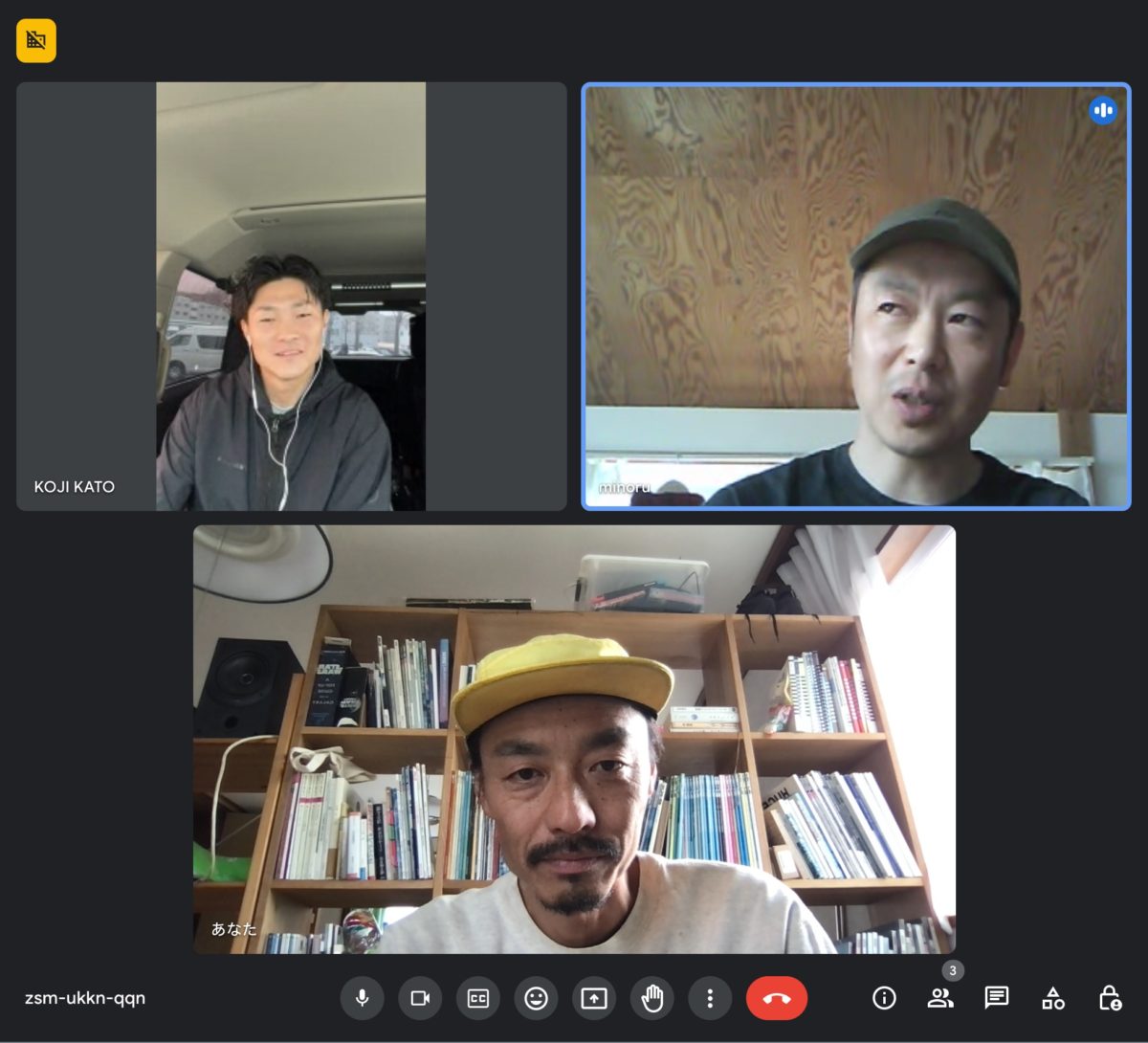
Click here for the first part
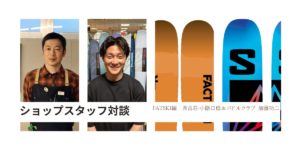
The rise of fat skis with a waist of 90 mm and excellent gliding performance.
Minoru Shojiguchi (hereafter referred to as Shojiguchi) : What does short fat look like?
Koji Kato (hereafter Kato) : Despite its 126mm waist width, the RMU "Butter Knife" is easy to handle, adapts well to terrain, and has buoyancy.
It's fun to play by hitting the wall like surfing or pulling the arc of the turn sideways. Also, it has a high control performance, so for those who are not good at powder, it may look like an extreme shape, but it may be good to have one for powder.
*The following video is an example of riding with Armada “Short Pants”
Shojiguchi : There are some elderly customers who have been buying from us for years, and they have quite a few fat skis.
I thought I didn't need skis anymore, but he bought me a butter knife.
At first, they said it was too short, but once they got used to it, they said it was really easy to ride. A long time ago, it felt like the thicker and longer the faster, the better, but I feel like the thicker and shorter one is now an option.
Kato : Butterknife is the only one that claims such a concept. Depending on how you think about it, Blizzard's "Spur" is also an ant. There are also lengths from 156 and 169 cm, and the waist width is 127 mm, which is more voluminous than the RMU "Butter Knife".

Shojiguchi : The length of the skis is important.
At exhibitions and test-riding events in Hokkaido, the latter half of 180cm and 190cm are preferred, but in Honshu this is not the case. There was a time when I thought I had to be in the 190cm range and I would lose if I rode in the 180cm range, but that is almost non-existent now.
Kato : At the paddle club, unless you like a particularly long one, if you don't have that kind of obsession, it's easy to handle with a height of about 10 cm plus, you can enjoy the buoyancy, and if you're going to BC, you can kick turn. It doesn't get in the way. Conversely, if you are not confident in your ability to ski, I recommend that you try the same size as your height.
As for the width, if the skiing field is mainly powder, choose a width of 110mm or more for sufficient buoyancy. To be honest, I think it's best to have two over 110mm for high season and 90mm for spring and other seasons. But when it comes to the first one, I would suggest a 90mm range that is versatile for skiing, or a 100mm range that hits the average value in everything.
Shojiguchi : Most core skaters have at least two.
Recently, people are riding fat skis with a waist width of 100mm or more, but more and more people are looking for skis that are a little slimmer and can be enjoyed on the slopes. But it's not a basic or alpine category ski... The snow season is getting shorter and shorter these days, so I'm looking for fat skis that aren't just powder skis.
Kato : That's amazing.
At this winter's test ride event, I had the impression that many people were looking for skis with waists in the low 90mm to high 80mm range. For example, Armada's "Dicrivity" 92. It's well made, and the turn is cut off. People who prefer basic skiing also said that the twisting feel of the top is very easy and that it seems to stick to it. It applies to people who want to get a little better and want to cruise the slopes with ease, and I think that kind of movement is remarkable.
Shojiguchi : Each brand puts effort into the lineup of waist widths of 100mm or less. Skis that tend to be fat skis and freeride have metal in them and are fun on compacted snow slopes.
Kato : Each company thinks differently. There are various ingenuity such as where to put the metal, the amount, and the shape.

Shojiguchi : Until a while ago, the performance was extreme. With the metal in place, you can slide smoothly on leveled ground, but if you can't see what's going on in the snow, or if the snow surface is rough, the torsion is so strong that it bounces back. It was a ski that made a huge difference in handling depending on the strength of the legs and the skill of the skier. However, people from overseas with large physiques prefer to use metal skis that hold down the skis, and skis with metal that have good running performance are popular. Certainly there is a sense of security that can be relied on when skiing.
If I had a fat ski with a waist in the 100mm range and wanted another one, I would choose a 90mm waist with metal. If you have a waist in the 90mm range, you can freely carve and shift. Basic carving skis are fun for skiing on level ground, but I think freeride-oriented metal skis that allow you to adjust the turn arc yourself are also interesting.
Kato : The number of skis like that has increased. Is it an answer from the manufacturer who enjoys it, such as using a strong core material instead of just containing metal? I definitely feel like there are more ways to enjoy it.
Shojiguchi : There is an evolution of fat skiing that matches the category, such as freestyle, freeride, and big mountain, and it feels like the range is expanding.
Kato : In the 2023-2024 season, skis that focused on the first half of 110mm waist especially caught my eye. I think the latter half of the 110mm range is closer to powder, but the difference is only a few millimeters, but when skiing on hard surfaces on steep slopes, for example, there are times when I think that a 118mm waist will lose edge grip.
But if you go up to 112mm or 114mm, you'll feel more comfortable, and when you actually ride it, you'll notice a difference in the grip on the edges. Carving and powder can be played at a high level evenly. Over the last couple of years, fat skis in the low 110mm range, which are strongly oriented towards freeride, have become a focus of attention.
* Völkl, Salomon, Blizzard, each with a waist width in the lower 110mm range. Not only is it easy to use in powder, but it is also easy to use in other locations.
Shojiguchi : It's true that skis around that area feel far from the edges, but on compacted snow slopes, the edges are solid and the feeling of cutting up is amazing. Especially the Volkl "Revolt" 121 I rode at the Niseko test drive event was a bit of a surprise. It was fat, but I could turn well, and I felt like I could do anything.
Editorial Department :Which skis did you test ride in the 2023-24 season?
Kojiguchi : Faction "Agent" 3 was good.
I think there was a freestyle image of Faction flying, but the slide was stable no matter which one I rode.

Especially "Agent" 3.
The skis I tested were 180cm, but I felt very secure on any slope, and I didn't feel that the length was short at all. The camber was solid and the reaction was agile, so carving performance on leveling was sufficient. People who can get on the board firmly are skis with a high degree of freedom. At the same time, it is light and easy to move. Also, since it doesn't have the image of mountain skiing, I liked the colors and graphics that felt different from other brands. The Armada "Locator" 104 in a similar direction made a similar impression.
Kato : I'm still riding, but Salomon's "QST Blank" is personally in the middle. It's like a powder ski and a slope ski in one.

In powder, I use the full length and the deep rocker in the top and tail makes it easy to move.
Even if you step on the stiff double sidewalls that absorb the vibrations under your feet, the skis won't become like a ship's bottom, and that's what pushes the snow. It feels as good as the snow and the skis move fast. Although it is fast, it turns smoothly with the shape of the tail and the depth of the rocker, so it is easy to hit the wall.
Also, the wide point is closer to the foot, so the edge catches the snow surface very quickly. That's why when I'm skiing on the ground, even a 186cm length feels like 170cm, and a 17m radius cuts carving quite well. In addition, the double sidewalls provide a strong grip underfoot, giving you the feeling that you will never let go of the snow.
Each situation is different, and I personally get a score close to perfect.
I've ridden other skis, but it wasn't easy to surpass them. Also, the 23-24 season graphics are cool. The sole is a marble-like gradation. I would like to recommend it to people who value slippage.
Editor : Thank you. Lastly, the 2013-2024 season has a lot of boot topics, such as the appearance of BOA boots.
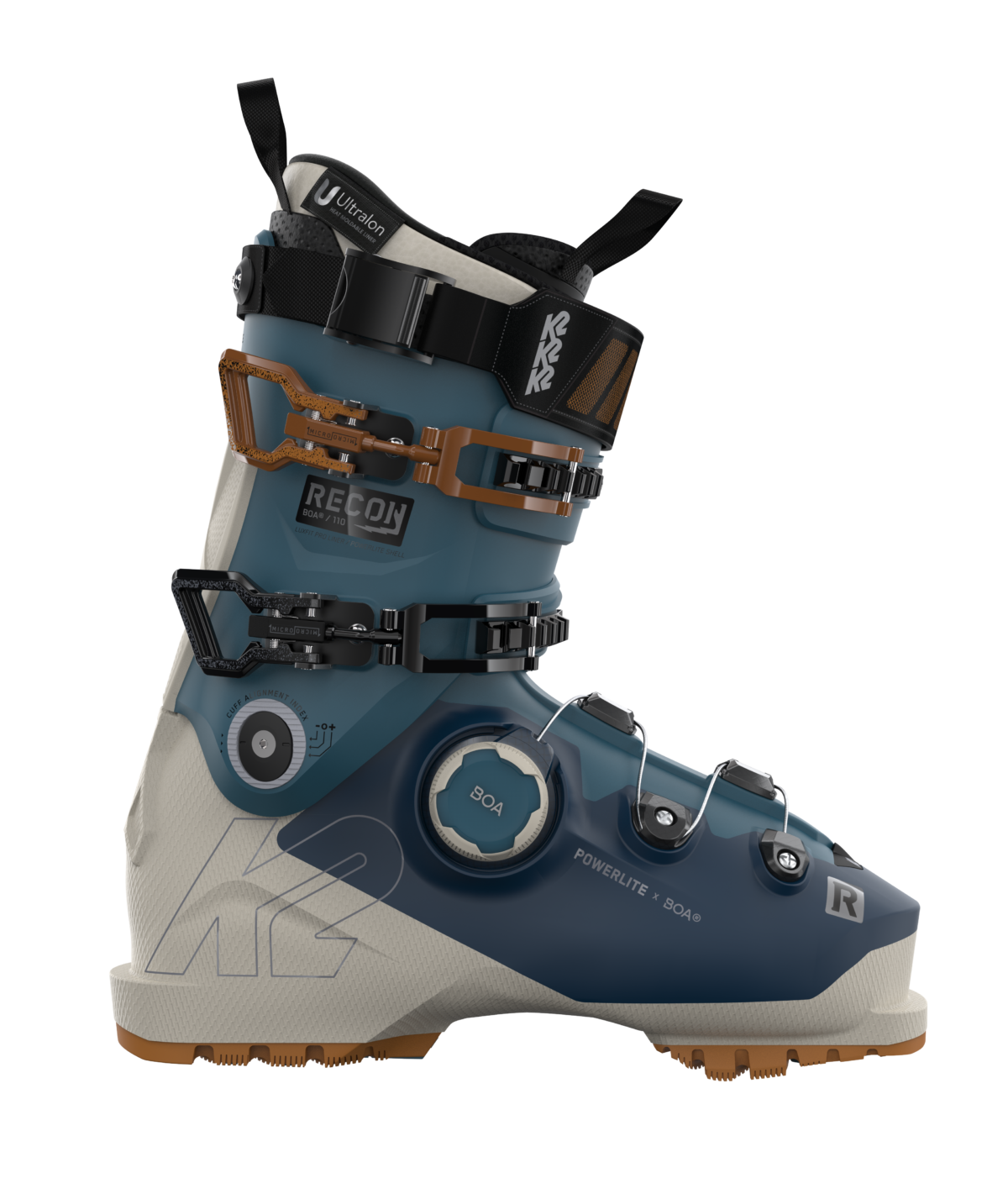
Kojiguchi : I wore BOA boots. At first, I thought it would be a hot topic, but it felt like both sides of the toe were tightened, and the inside of the toe was very tight. I think that tightening is quite effective. By being able to make fine adjustments, the boots have become a tighter fit, and I have the impression that the feeling of sliding on the ground has improved.
Kato : Personally, I have thin feet, so it was a bit difficult to match. Even if I tightened it all the way, it felt like half of my instep was playing. When the wire was fully occupied, there was a phenomenon that the pressure was applied to the area near the ankle and it felt a little painful.
Shojiguchi : If it comes to anything other than BOA, I think it's the weight reduction. The shape of the shell is the same for each manufacturer, so the point is the inner. Many manufacturers tried to reduce the weight of the innerwear for a while, but they felt it was too thin, so they returned to thicker styles. I think that it is one of the factors that enhances the gliding performance in combination with the compatibility with the shell.
Kato : Each manufacturer has their own ideas for shells. Like the K2 "Mind Bender", the material is changed for each part, making it easy to use the ankle and adapt to various snow conditions and slippery. Boots with Salomon's core frame have a good system that reinforces and compensates for the weak points of wide boots that tend to bend and lose power.
As with skis, I think that the more clearly you understand the situation and purpose of using boots, the more you can choose the ones that fit perfectly.
If gliding is important, you don't have to have a walk mode. In fact, without it, there is no gap between the lower shell and the upper shell, and if you choose the right flex, power will be transmitted to the ski without waste. The alpine boots are also lighter, so if you mainly ski at ski resorts, you don't have to worry about walking mode.
Kojiguchi : There is a considerable difference in the performance of the boots.
When I tried on Dalbello's racing boots at a test drive event in Niseko, they reacted more sensitively than the boots I usually wear, and I really enjoyed sliding. Some people turn the slopes on fat skis, while others ski the BC wearing stickers.
The boots don't have a walk mode either, but there are unique boots with tech pin holes on the tip that give priority to slipping. There are more gears that can be adapted to each individual's taste, so it's hard for us store staff to make suggestions because there are too many choices.
Kato : That's true.
Editorial Department : If you have a specific set of tools to use, or if you are unsure about your style of skiing or what kind of tools are best for you, you can talk to the staff at the shop who are familiar with the gear and help you find the right gear for you. It is good to look for a setting that was even a little in the.
thank you very much.
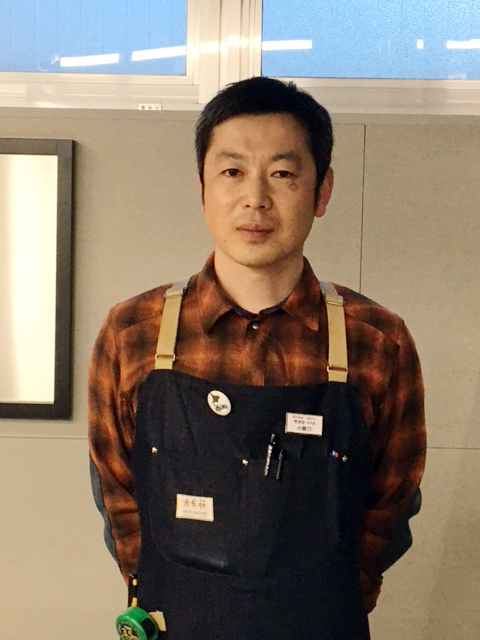
Shuugakuso Hokudai branch staff Minoru Shojiguchi
has been in BC for over 20 years, and stands on the snow for about 60 days during the season.
With a wealth of experience as his backbone, he also gives accurate advice on backcountry gear. He has a deep knowledge of not only gliding equipment, but also items that aid in activities in the mountains. The best day of the 23rd season is Mt. Tokachi in January. The temperature dropped to nearly -30°C, but the mountains were clear and no wind. It was too cold to ski, but the snow and the scenery made it a perfect day. Instagram @ shugakuso__official
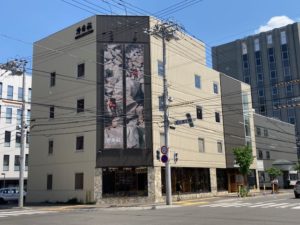

Paddle Club Staff Koji Kato
Looking for snow regardless of fields such as ski resorts and backcountry, skiing for a total of 100 days in the season.
Utilizing his experience in competitive skiing, he has a reputation for selecting gears that bring out high-quality turns. The unforgettable mountain trip of the 23rd season is Kamoidake International Ski Resort in late December. Powder & Mash Heaven was said to be the best environment for free skiers. Instagram @ kj_kato
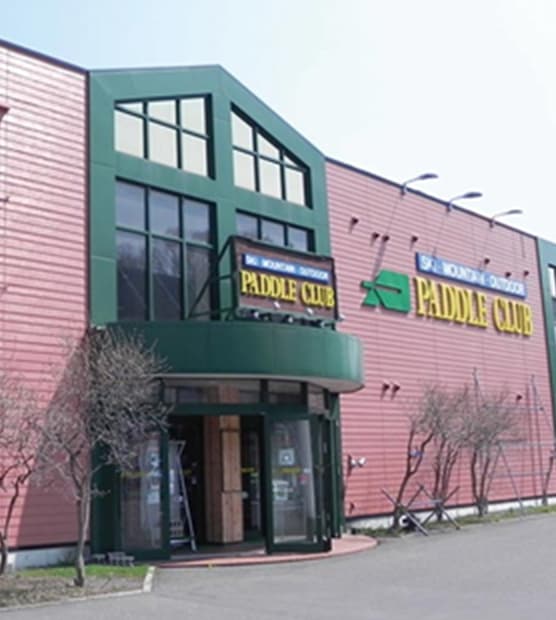
Paddle Club Sapporo Oyachi
Address: 1-2-10 Oyachinishi, Atsubetsu-ku, Sapporo
Tel: 011-890-8777
Hours: 10:30-19:00
Closed: Every Wednesday

